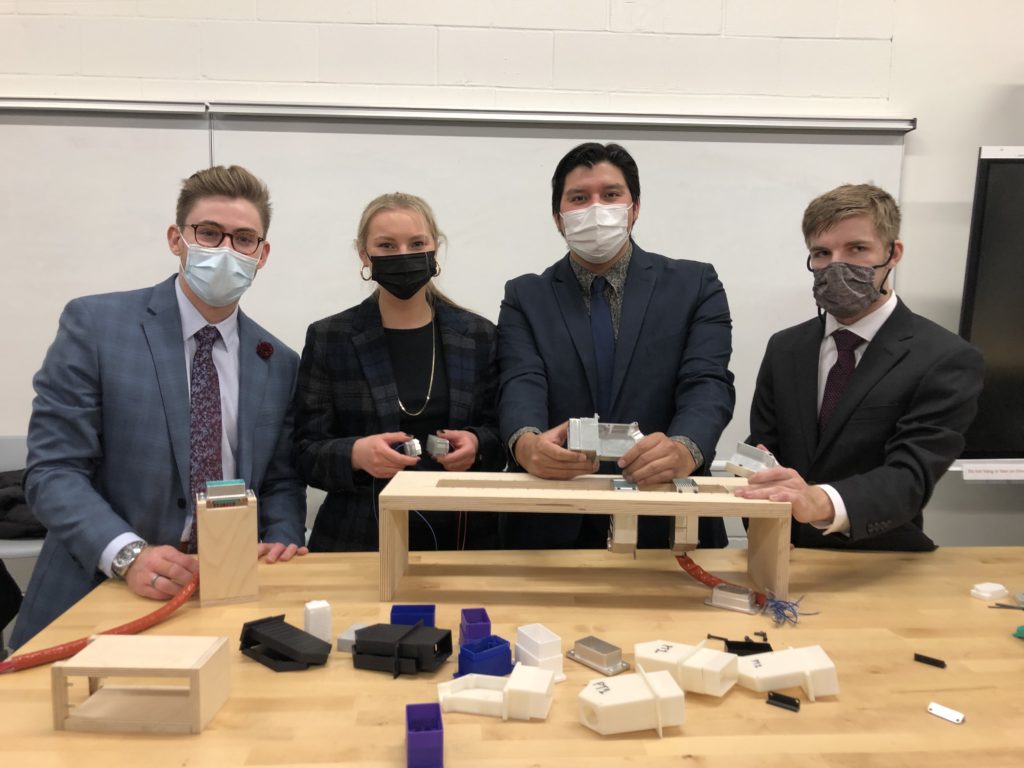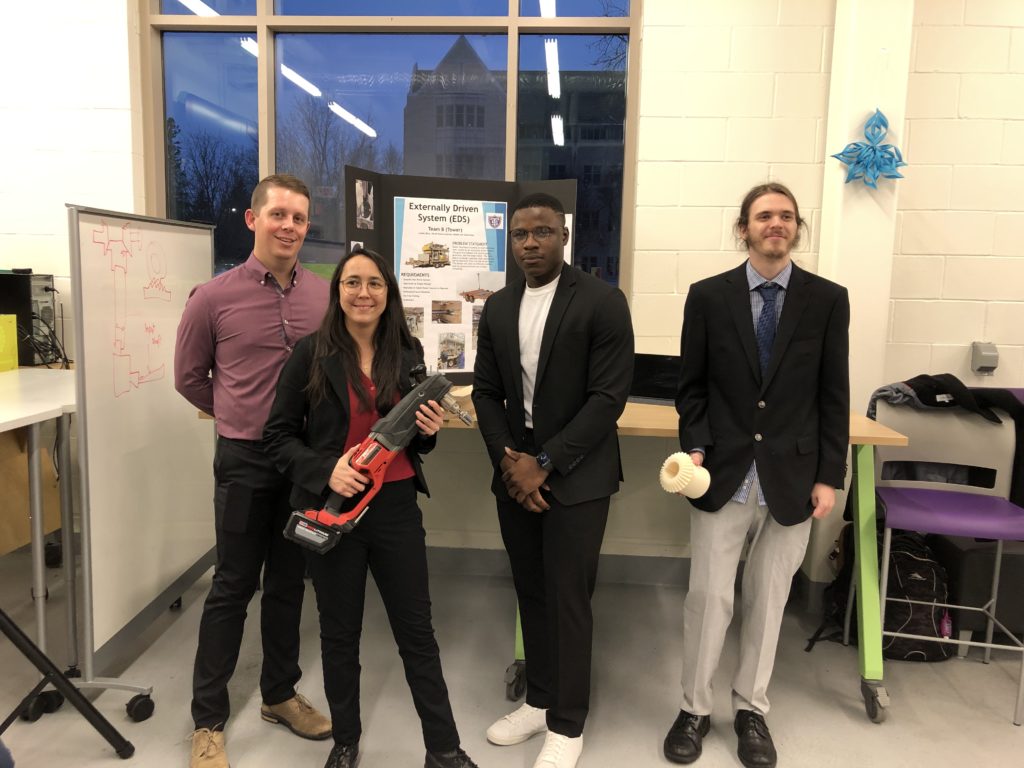St. Thomas School of Engineering students had an opportunity during what was basically a “show and tell” to reveal the midyear progress of their Senior Design Clinic projects to family, friends, peers and faculty.
During the December showcase and banquet held in the Facilities and Design Center, students on approximately a half dozen multi-disciplinary teams demonstrated the designs that they developed in partnership with industry sponsors, nonprofits and community partners.
One team, which continued the work that began with seniors from the previous academic year, unveiled the patented SAF-T VEST proof of concept and first-generation prototype from Davenport SAF-T Systems. The body-worn vest is designed to deploy airbags to offer protection in a forward fall. The prototype currently has one airbag, but the more advanced wearable technology envisioned by the founders will feature a network of airbags that will provide injury protection from the hips to the head, no matter which direction the user falls.
“It is exciting to work on a real engineering project for the purpose of helping others,” said Rahaf Bahajry, a mechanical engineering student and a member of this year’s SAF-T VEST team.
Mechanical engineering student Adam Riechert said that his team's senior design project “challenged me and my group to think outside the box and come up with our own unique solution to a problem.”
His team is working with Medtronic on a material testing apparatus for medical devices. “I think this project is important because it will help Medtronic to develop medical devices that will change people's lives,” he said. “Being able to characterize and test materials that will be implanted in the body is crucial for developing a safe and effective product.”
Timara Williams, also a senior mechanical engineering student, is working with her team on a mobile, low-cost hydroponic system using a Nutrient Film Technique (NFT) that will be used by the nonprofit Seeds Feeds to help people easily grow vegetables and other plants indoors.

In order to minimize crop loss, their design factors in pest and disease management and monitors the nutrients in the water for optimal growing. Materials must be food-safe and provide a means for disassembly and disinfecting. The design cablls for the system to be modular in nature, using readily available components that are easy to assemble by volunteers who don’t have carpentry or plumbing skills. The team is also designing components that should be able to easily switch in-out of a tiny mobile farm.
“The hydroponic system will be used to create produce that will feed the Minneapolis community while also being a learning experience for community members to have their own system within their homes,” Williams said. “It changes the way people will view growing plants and will provide families with the opportunity to get fresh produce year-round. It is also an efficient system that is affordable and easy to assemble.”
Allanah Wahlquist and her team redesigned a product called a back shell that is used the world over in jet engine test stands. “It was important for our team to come up with a solution that would not only work as a replacement for the part itself, but also work in conjunction with the current versions of the connector back shell.”

The team was able to make a similar back shell as the previous product, but at a more cost-effective price.
“I feel like the Senior Design Clinic is so helpful and important for students to take because it really helps to prepare you for the transition between school life and work life,” Wahlquist said. “The Senior Design Clinic was a good mix of feeling like a class, but also like a job. There were events in almost every team that no one was prepared for or expected, which is similar to how work life can be.”
The Senior Design Clinic showcase also gave the students an opportunity to practice describing and demonstrating their projects, but with an audience inside their comfort zone of family and friends before their final demonstration spring semester in front of judges and industry professionals.
The School of Engineering expects the outcomes for students in the two-semester capstone course to include networking with industry organizations and professionals, practical experience through the design cycle, the confidence that comes with real experience, and sometimes even job offers, or their names included on patents.

Wahlquist added that the course also helps to teach students how to manage their own time as well as time spent working in a team. “It was definitely a challenge to get used to the structure of SDC compared to other classes, but I found that the Senior Design Clinic was more similar to my internship experience than other courses. I also feel that the St. Thomas School of Engineering did a great job of preparing students for senior design and helping support us along the way.”



























